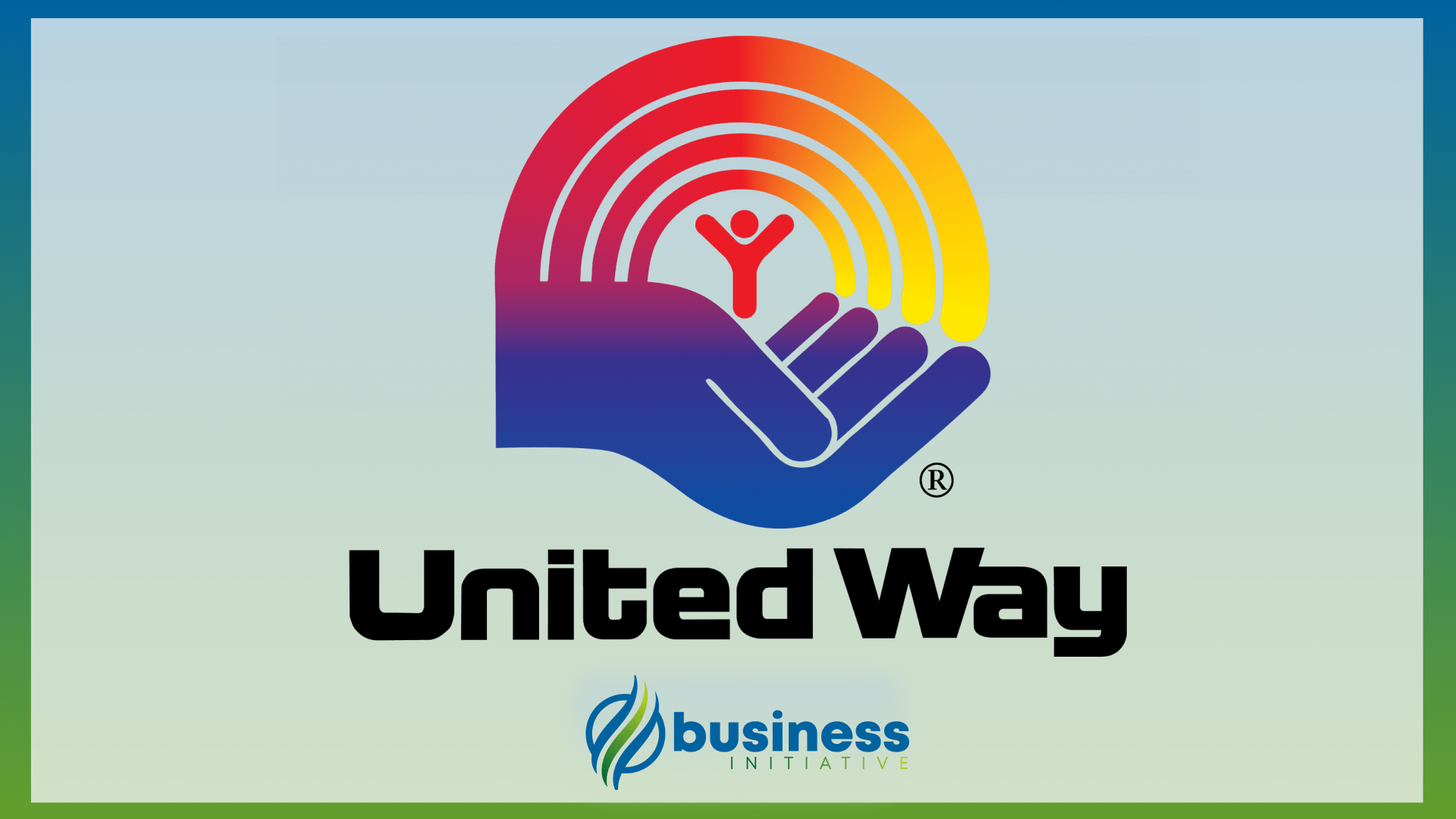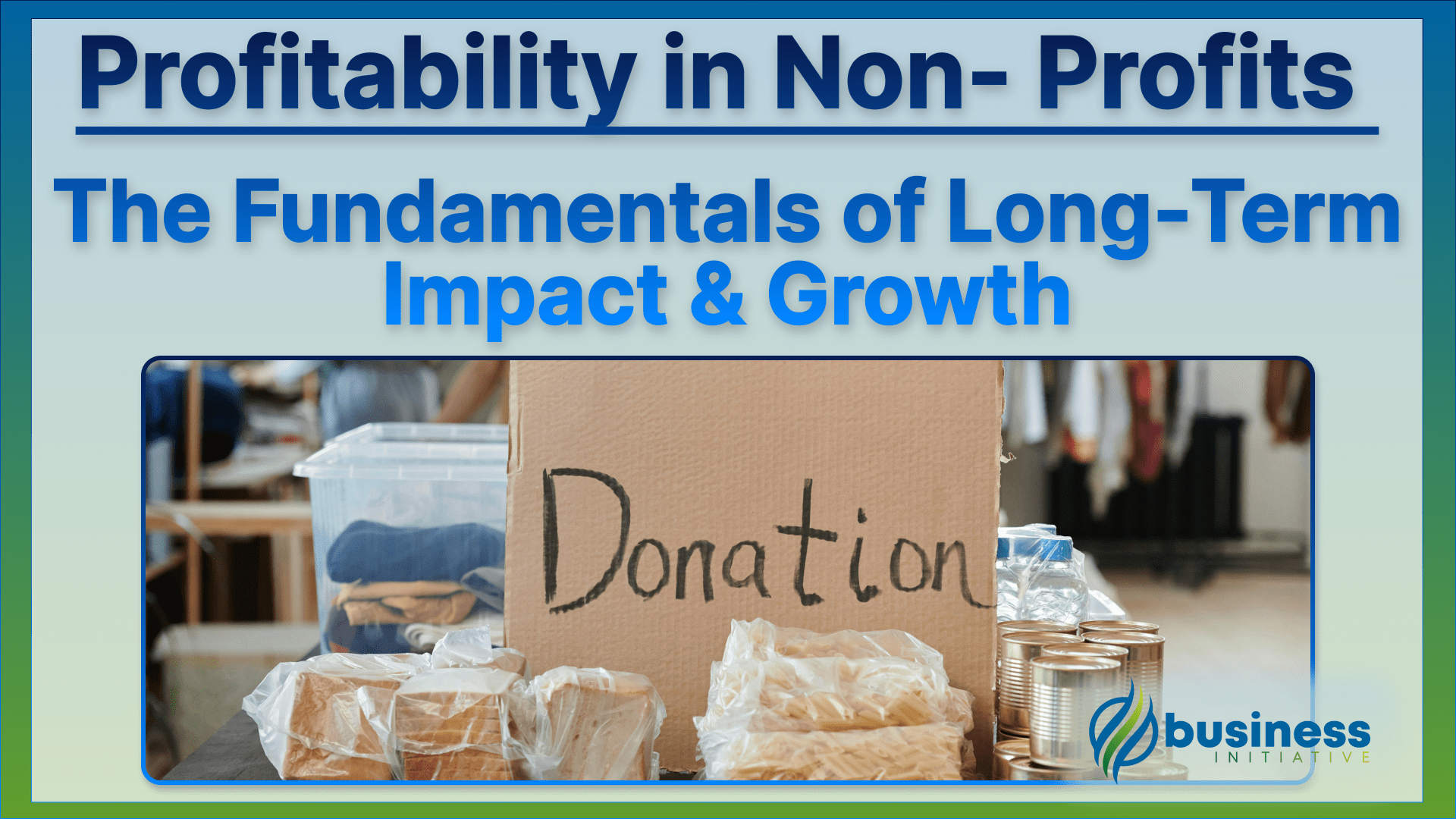Profitability in nonprofits is a game-changer.
While for-profit businesses chase shareholder value, nonprofits focus on building a surplus to fuel their mission.
This difference can mean thriving in uncertainty or facing financial strain.
 Key Takeaways
Key Takeaways
- Nonprofits must focus on creating surplus funds to ensure long-term sustainability and expand their impact.
- Diverse revenue streams, such as donations, grants, and service fees, are crucial for financial stability in nonprofits.
- Efficient financial practices, like transparent reporting and strategic fundraising, build trust and drive sustained growth.
- Successful nonprofits like Feeding America prioritize reinvesting funds into their mission to maximize impact.
- Managing resources effectively turns financial challenges into opportunities for growth and enhances organizational resilience.
In this article, we reveal the secrets behind successful nonprofits like Feeding America and United Way.
Discover how they generate surplus funds and strategically reinvest them to create lasting impact.
You’ll learn practical strategies to enhance your organization’s financial health and ensure its sustainability.
 Table of Contents
Table of Contents
Managing funds effectively is vital when resources are tight.
The insights shared here will show you how to turn financial challenges into opportunities for growth.
Whether you’re struggling to maintain stability or looking to expand your impact, the answers lie within.
Ready to transform your nonprofit into a financial powerhouse?
Keep reading to uncover the strategies that drive nonprofit profitability and sustainability.
Profitability in Nonprofit Organizations

Profitability in the nonprofit sector is distinct from that in the for-profit world.
For-profit businesses focus on generating profit for distribution to owners or shareholders.
In contrast, nonprofits aim to generate surplus funds to reinvest into their mission, ensuring long-term sustainability and the ability to expand their impact.
Key Differences:
-
For-Profit Profitability: Surplus funds are distributed as dividends to owners or shareholders. The goal is to maximize shareholder value.
-
Nonprofit Profitability: Surplus funds are reinvested into the organization’s mission and programs. The goal is to maximize impact and sustainability.
Importance of Surplus Funds:
Surplus funds are crucial for nonprofits.
They provide a financial cushion, enabling the organization to weather economic fluctuations and unforeseen expenses.
These funds can be used for program expansion, capacity building, and innovation, all of which are essential for long-term impact.
Doctors Without Borders, a well-known NPO, is known for maintaining a lean administrative structure.
This approach ensures that surplus funds are directed toward their mission of providing emergency medical care worldwide.
Common Revenue Streams for Nonprofits

Nonprofits rely on diverse revenue streams to ensure financial stability and sustainability.
These include donations, grants, membership fees, service fees, product sales, and investments.
-
Individual Donations:
These are the primary source of funding for many nonprofits.
In 2022, individuals were the largest source of charitable giving, contributing $319.04 billion.
This amount represented 64% of the total charitable donations for the year.
-
Grants:
Grants from foundations, corporations, and government entities provide significant funding.
Based on a report from the National Council of Nonprofits, 31.8% of nonprofit organizations (NPOs) received funding through government grants and contracts.
It enables them to sustain operations, expand programs, and serve their communities more effectively.
-
Membership Fees:
Many nonprofits generate income through membership fees.
For example, professional associations and museums often rely on membership dues.
The American Alliance of Museums found that 75% of museums charge membership fees.
-
Service Fees and Product Sales:
Nonprofits often charge for services or sell products related to their mission.
For instance, the YMCA generates significant revenue from membership fees and program services.
In 2022 YMCA made just under $72.3 million from their memberships, services, and programing offers.
Investment income and endowment funds provide long-term financial stability.
Harvard University’s endowment, valued at over $50 billion, supports its extensive programs and initiatives.
Most Profitable Nonprofits
1. Feeding America

- Mission:
Feeding America aims to eradicate hunger in the United States by providing food to people in need through a nationwide network of food banks.
Their mission is to ensure equitable access to nutritious food, advocate for policies that address food insecurity, and engage the public in the fight against hunger.
- Revenue Model:
Feeding America operates primarily through private donations, corporate partnerships, and government grants.
In 2023, it received approximately $4.27 billion in private donations.
The organization leverages these funds to support its extensive network of over 200 food banks and 60,000 food pantries and meal programs across the country.
They also receive significant contributions from food manufacturers, retailers, and agricultural producers who donate surplus food.
The organization ensures that the majority of its funds are directed towards programs and services that address hunger.
They maintain rigorous financial oversight and accountability standards, regularly undergoing independent audits.
Their financial statements are publicly available, reflecting their dedication to responsible stewardship of donated funds.
2. United Way Worldwide

- Mission:
United Way Worldwide focuses on improving lives by mobilizing the caring power of communities around the world to advance the common good.
Their mission encompasses health, education, and financial stability, aiming to create long-term, sustainable change in communities.
- Revenue Model:
United Way Worldwide operates through a combination of private donations, corporate partnerships, and workplace giving campaigns.
In 2023, they received approximately $2.6 billion in private donations.
Their revenue model relies heavily on corporate social responsibility programs where businesses encourage employees to donate through payroll deductions.
Additionally, United Way partners with local businesses and government agencies to fund community-based initiatives.
They allocate funds to local United Way chapters based on community needs, ensuring that donations are used effectively at the grassroots level.
United Way conducts annual financial audits and provides detailed financial reports to donors and the public.
They emphasize efficient fund distribution to maximize impact on their mission areas.
3. Salvation Army

- Mission:
The Salvation Army’s mission is to preach the gospel of Jesus Christ and to meet human needs in His name without discrimination.
Their services range from providing shelter and food to the homeless, assisting disaster survivors, supporting veterans, and offering rehabilitation for those struggling with addiction.
- Revenue Model:
The Salvation Army’s revenue model includes private donations, government grants, and proceeds from its thrift stores.
In 2023, they received around $2.04 billion in private donations.
Their thrift stores generate significant income, which is reinvested into their various programs.
Additionally, they receive contributions from individuals, corporate partners, and philanthropic foundations.
The organization is known for its efficient use of donations, with a high percentage of funds directed towards program services.
Annual financial audits and comprehensive financial reports are publicly available, demonstrating their commitment to responsible financial management.
Financial Practices of Profitable Nonprofits
-
Transparent Reporting: Providing clear and detailed financial reports builds trust with donors and stakeholders.
-
Strategic Fundraising: Investing in robust fundraising strategies, including digital campaigns and donor engagement, drives sustained revenue growth.
-
Cost Efficiency: Implementing cost-saving measures without compromising program quality ensures more funds are available for mission-driven work.
By focusing on profitability, nonprofits can ensure they have the resources needed to achieve their missions and create lasting impact.
Leaders can apply these insights to improve their financial practices, ultimately driving growth and sustainability for their organizations.
Practical Application

The nonprofit sector is uniquely challenging, requiring organizations to balance mission-driven goals with financial sustainability.
Here’s how you can apply these insights to create lasting impact:
Build a Robust Fundraising Strategy
Fundraising is the lifeblood of any nonprofit.
To stay competitive and ensure steady growth, nonprofits need to develop a diversified fundraising strategy that goes beyond traditional methods.
-
Digital Campaigns: Utilize digital platforms such as social media, email marketing, and crowdfunding sites to reach a wider audience. Tailor your messaging to different segments of your donor base, and use storytelling to connect emotionally with potential donors. For instance, create compelling video content or share impactful stories from beneficiaries to illustrate the real-world effects of donations.
-
Donor Engagement: Engage your existing donors through personalized communication and regular updates on your organization’s progress. Host virtual events, webinars, and Q&A sessions to involve donors and show them the tangible impact of their contributions. Consider implementing a donor recognition program to acknowledge and appreciate their ongoing support.
-
Diversification of Funding Sources: Explore alternative funding options such as corporate sponsorships, partnerships with local businesses, and grants from private foundations. By tapping into multiple revenue streams, you reduce reliance on a single source and increase financial stability.
Enhance Financial Transparency
Financial transparency is crucial for building trust with donors, stakeholders, and the public.
Being open about your organization’s financial status and how funds are allocated can boost credibility and encourage more support.
-
Detailed Financial Reports: Publish comprehensive financial reports that clearly outline income, expenditures, and allocation of funds. Use visuals like charts and graphs to make complex data more accessible and easy to understand. Regularly update stakeholders with reports and be transparent about any financial challenges or changes in strategy.
-
Stakeholder Communication: Maintain open lines of communication with stakeholders by hosting regular meetings and providing updates on financial performance. Encourage feedback and involvement in decision-making processes to demonstrate accountability and collaboration.
-
Audit and Accountability: Conduct independent financial audits annually to verify the accuracy of your reports and ensure compliance with industry standards. Share audit results with donors and stakeholders to reinforce your commitment to responsible financial management.
Reinvest Wisely
The key to long-term sustainability is strategic reinvestment of surplus funds into initiatives that align with your organization’s mission.
This approach not only strengthens your programs but also ensures continued growth and impact.
-
Program Expansion: Identify areas where your organization can expand its reach or enhance existing programs. Consider investing in new technologies, staff training, or additional resources that will enable you to serve your community more effectively.
-
Innovation and Capacity Building: Allocate funds to innovate and improve operational efficiency. This might involve adopting new technologies, streamlining processes, or investing in research and development to find new ways to achieve your mission.
-
Impact Measurement: Develop a framework for measuring the impact of your programs and initiatives. Use data to assess effectiveness and identify areas for improvement. This information can help you make informed decisions about where to reinvest and showcase your organization’s achievements to donors.
Drive Meaningful Change
By implementing these strategies, nonprofits can achieve greater financial resilience and drive meaningful change in their communities.
A well-rounded approach to financial management not only ensures stability but also enhances your ability to fulfill your mission.
-
Community Involvement: Engage with the community you serve to understand their needs better and tailor your programs accordingly. Building strong relationships with local stakeholders can lead to valuable partnerships and additional support.
-
Long-term Planning: Develop a long-term financial plan that includes goals for growth, risk management, and contingency strategies. A proactive approach to financial planning can help you navigate challenges and seize opportunities as they arise.
Incorporating these practices will empower your nonprofit to thrive in today’s dynamic environment.
By focusing on robust fundraising, transparency, and strategic reinvestment, you can build a sustainable organization that makes a lasting difference.
FAQs - Frequently Asked Questions About Non-Profit Profitability

In Summary…
Profitability in the nonprofit sector requires a different approach than for-profit businesses, but it’s equally important for long-term success.
By focusing on creating surplus funds and strategically reinvesting them into their mission, nonprofits can achieve financial stability and expand their impact.
In this article, we explored several key strategies and insights:
-
Diverse Revenue Streams: Nonprofits must leverage various revenue sources, such as individual donations, grants, service fees, and investments, to ensure financial stability and sustainability.
-
Efficient Financial Practices: Implementing transparent reporting, cost-saving measures, and strategic fundraising efforts helps build trust with donors and stakeholders, enabling sustained growth.
-
Successful Nonprofit Examples: Organizations like Feeding America and United Way have thrived by effectively managing resources and prioritizing mission-driven reinvestment of surplus funds.
By applying these strategies, you can enhance your organization’s financial health, turning challenges into opportunities for growth.
You can ensure your nonprofit has the resources needed to achieve its mission, make a significant impact, and thrive in an ever-changing environment.
Ready to take your nonprofit’s financial strategy to the next level?
Schedule a free consultation call with Business Initiative or use our contact form to learn how we can help your organization achieve sustainable growth and maximize its impact.
Don’t miss out on exclusive insights and updates—subscribe to The Initiative Newsletter and follow us on X for the latest news and resources in the nonprofit sector.
Additional Resources and Information
These resources offer valuable insights and practical guidance for nonprofit leaders looking to enhance their financial practices, diversify revenue streams, and achieve sustainable growth.
By exploring these links, you can gain a deeper understanding of the strategies and ideas discussed in the article.
1. Understanding Nonprofit Profitability
- The Nonprofit Quarterly - This publication provides a wealth of information on nonprofit management, financial practices, and sector trends.
- GuideStar by Candid - GuideStar offers detailed reports on nonprofit organizations, including financial health, transparency, and mission impact.
- Charity Navigator - A leading resource for evaluating the financial health, accountability, and transparency of nonprofits.
2. Diversifying Revenue Streams
- National Philanthropic Trust (NPT) - Explore detailed statistics and reports on charitable giving trends and donor behaviors.
- Grants.gov - A comprehensive resource for finding and applying for federal grants, essential for nonprofits seeking government funding.
- The Foundation Center - Offers resources and training for grant-seeking organizations, helping nonprofits connect with potential funders.
3. Financial Transparency and Accountability
- Nonprofit Finance Fund - Provides tools, training, and guidance on nonprofit financial management and sustainability.
- BoardSource - Offers resources on nonprofit governance, focusing on board responsibilities, accountability, and financial oversight.
4. Strategic Fundraising and Donor Engagement
- AFP Global - The Association of Fundraising Professionals provides resources, training, and networking opportunities for fundraising professionals.
- Bloomerang - Offers insights and tools for donor management and engagement, focusing on building lasting donor relationships.
5. Investments and Endowments
- The Nonprofit Times - Features articles and reports on nonprofit financial strategies, including investments and endowment management.
- Harvard University Endowment - Learn about the structure and impact of one of the world’s largest university endowments, offering insights into strategic financial planning.
6. Innovation and Capacity Building
- The Bridgespan Group - Provides insights and resources on nonprofit innovation, capacity building, and scaling impact.
- Stanford Social Innovation Review (SSIR) - Features articles on social innovation, nonprofit management, and strategies for achieving systemic change.
7. Long-term Financial Planning and Risk Management
- The Nonprofit Risk Management Center - Offers resources and guidance on risk management, helping nonprofits navigate financial uncertainties.
- Independent Sector - Provides research, policy insights, and resources on nonprofit sector trends and challenges.
Sources
- Doctors Without Borders - Doctors Without Borders is known for maintaining a lean administrative structure to direct surplus funds toward emergency medical care worldwide.
- NPTrust - NPTrust provides valuable insights into charitable giving statistics, highlighting individual donations as a significant source of funding for nonprofits.
- National Council of Nonprofits - This report from the National Council of Nonprofits highlights the role of government grants in sustaining nonprofit operations and expanding programs.
- American Alliance of Museums - The American Alliance of Museums provides data on museum membership fees, indicating that 75% of museums charge such fees.
- YMCA - YMCA's financial statements show that they generated significant revenue from memberships, services, and programming offers.
- Harvard University - Harvard University's endowment, valued at over $50 billion, provides financial stability and supports extensive programs and initiatives.
- Statista - Statista provides detailed statistics on the revenue models of leading nonprofit organizations like Feeding America and United Way Worldwide.


